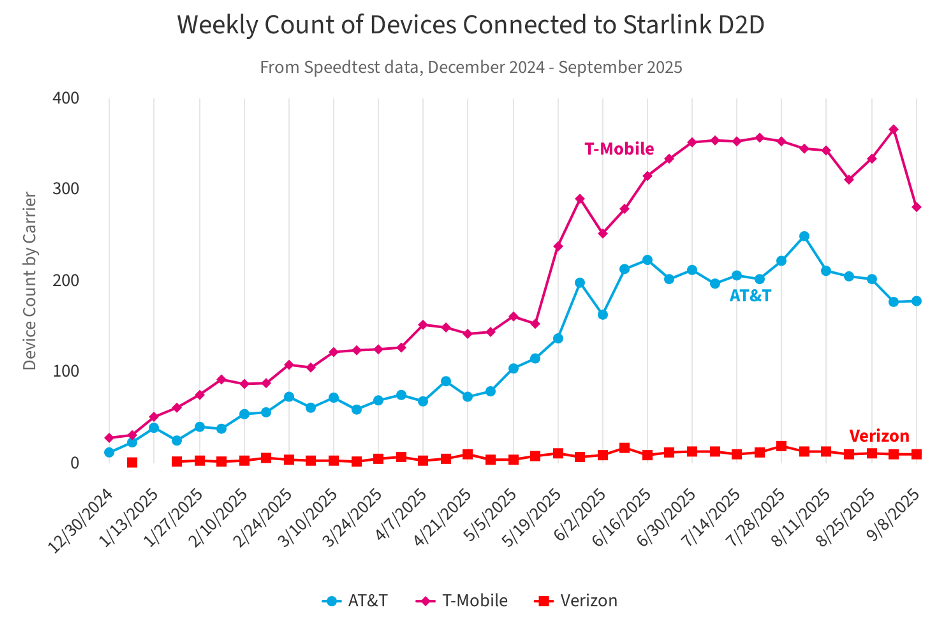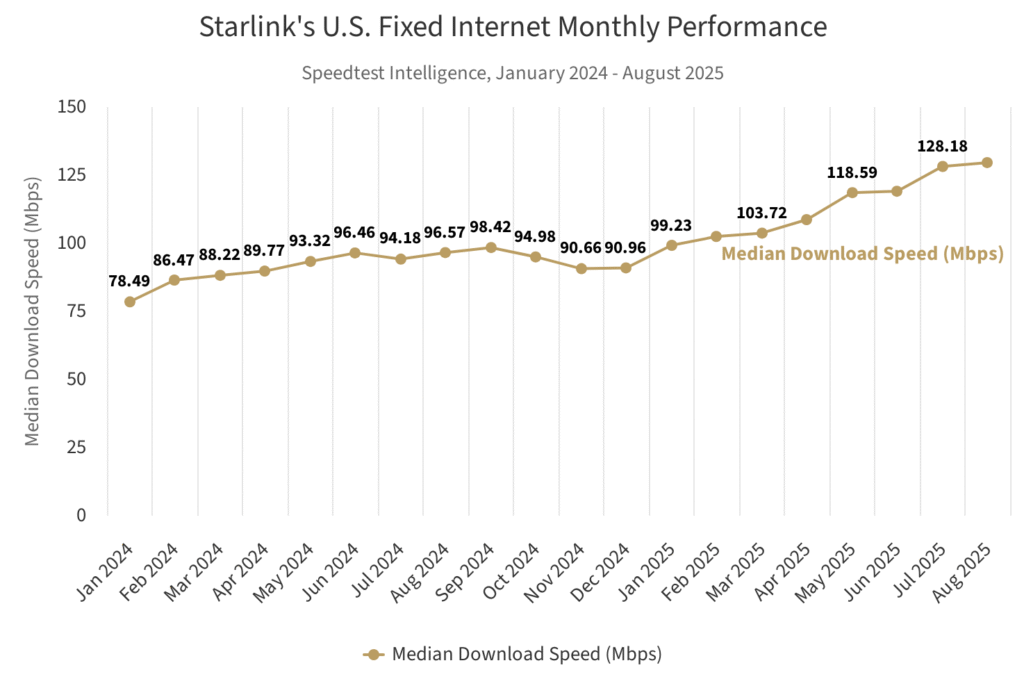In February 2025, T-Mobile launched a beta test of its T-Satellite text messaging service, powered by SpaceX, offering it free for three months to its own customers as well as those of AT&T and Verizon. The beta gained 2 million signups and 30,000 daily users, including hundreds of thousands from rival carriers. The commercial launch followed in July 2025 with around 650 Starlink satellites. The service is free for T-Mobile’s Experience Beyond plan subscribers and available for $10/month for other users, including via eSIM for non-T-Mobile customers.

By September 2025, T-Mobile users remained the largest group on the service, with notable adoption among AT&T customers. Verizon adoption has been lower, likely due to its Skylo partnership, which offers satellite messaging primarily for emergencies but is expanding to regular use. AT&T has a deal with AST SpaceMobile, which aims to provide intermittent satellite connectivity later in 2025 and more continuous coverage in 2026 as its satellite constellation grows.
In 2025, Ookla Speedtest data highlighted key U.S. counties with the most Starlink D2D (device-to-device) connections: Los Angeles County, CA; Larimer County, CO; Teton County, WY; Mohave County, AZ; and Mineral County, MT. These areas share common characteristics: remote, rugged terrain, limited cellular coverage, and locations prone to emergencies like wildfires. T-Mobile used D2D messaging in wildfire-affected zones, reaching nearly 198,000 users in Los Angeles County early in the year.
Despite these high-connection areas, D2D usage is relatively rare nationwide because most users spend the majority of their time in areas well-covered by cellular networks and Wi-Fi. However, the small 2.79 percent of time when users are outside cellular coverage represents critical moments — such as emergencies — where D2D connectivity is highly valuable. Surveys indicate over 60 percent of U.S. smartphone users would pay at least $5 per month for satellite D2D services, potentially generating $3 billion in additional annual revenue.

The growing market has attracted major players, including Lynk Global, AST SpaceMobile, Viasat, Iridium, and Amazon’s Kuiper. Industry leaders are also expanding capabilities: SpaceX secured a $17 billion deal for spectrum from EchoStar to enhance its service, while Apple is investing $1.7 billion in Globalstar for a new satellite constellation.
SpaceX has built its Starlink satellite internet network to over 8,000 satellites, serving roughly 7 million fixed internet customers globally. Starlink’s D2D (device-to-device) satellites, currently around 650 in number, are separate from those for fixed internet, ensuring U.S. speeds for fixed connections remain unaffected by T-Mobile’s T-Satellite service. The U.S. government’s $478 million BEAD grants support Starlink’s rural fixed internet rollout to nearly 300,000 locations.
Beyond the U.S., Starlink’s D2D satellites support international mobile operators like Rogers, Optus, Telstra, KDDI, Entel, Kyivstar, and One (New Zealand), collectively serving around 7 million D2D users worldwide. Early D2D services allow T-Mobile users to access selected apps, though speeds are limited and connections may take time due to satellite movement.
SpaceX plans to expand its D2D capabilities using $17 billion in spectrum purchased from EchoStar, aiming for 4G LTE-like speeds. The company has requested FCC approval for up to 15,000 D2D satellites and is coordinating with phone vendors to ensure future devices support the new spectrum.
Baburajan Kizhakedath
